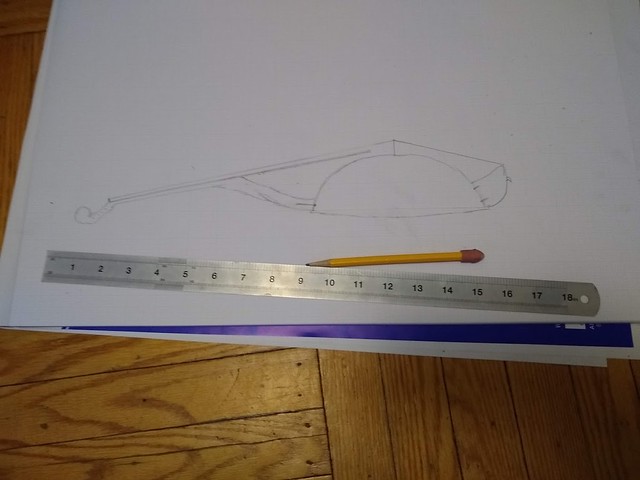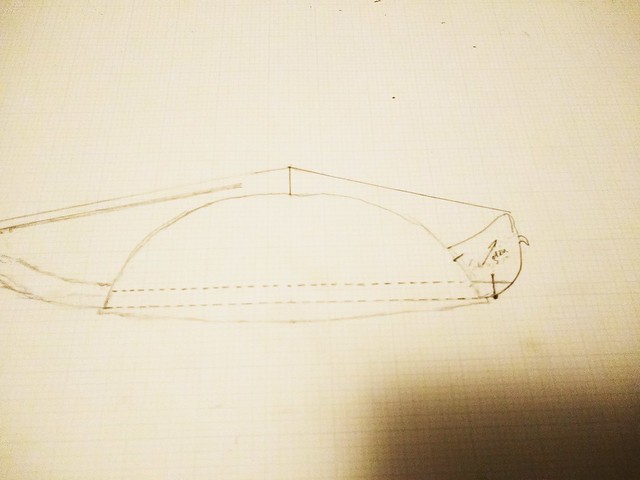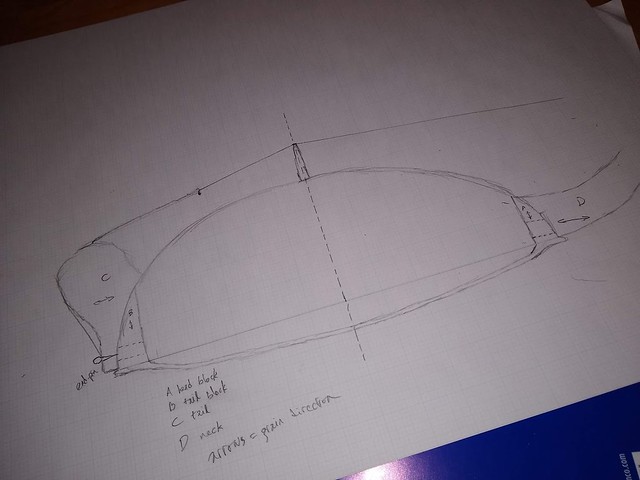|
|
🦋 viola d'ottone: dowel, or bolts?
Last night it occurred to me (still waiting on delivery of the pan that will be the body of the brass viol) -- I've been thinking of this instrument all along as having a dowel through the body, similar to the other instruments I've built. But if the pan is rigid and strong, it might make more sense to have a separate neck and tail, attached to the pan with bolts. I think this would offer a few key advantages:
- The resonating chamber would be hollow, like a violin's. It seems intuitively like this would produce a clearer tone.
- The joinery would be more straightforward. It will be easier to line up and drill holes in the pan, than to lay out and cut mortises for the dowel.
- The shape of the tail would no longer be limited to an extension of the dowel. I could give the tail height, so the tailpiece would attach closer to the height of the bridge feet. Then the string angle would not be so sharp on the tail side.
(Update: nm, this was a silly idea. The instrument pictured would sound horrible if indeed it would tension up at all.)

posted morning of Saturday, January 25th, 2020
➳ More posts about viola d'ottone
➳ More posts about Projects

Jeff Menzies pointed out how much stress the bolted neck would put on the body of the instrument, and I think he is right that it would not work. I am thinking now that the tail extension I have drawn here would work with a through dowel, I can bolt the end of the dowel to the extension:

posted morning of January 25th, 2020 by Jeremy Osner

So I guess I am back to (laying out and) cutting mortises in the brass. I think I will be able to do that -- I need to acquire a Dremel tool first.
It will take a good deal of care.
posted morning of January 25th, 2020 by Jeremy Osner

OK, well, one more idea... Assuming the pan is strong enough to bear the string tension -- I could have a separate neck and tail, no dowel, and the neck and tail each wedged into a mortise in the pan, with a tenon through the pan into an internal block, similar to the end blocks of a violin. That could work...

The idea here is to distribute the tension of the strings evenly over the pan. I have a gut feeling that the pan will vibrate more if it is under tension, I don't however really know if this is true.
posted morning of February first, 2020 by Jeremy Osner
| |
|
Drop me a line! or, sign my Guestbook.
•
Check out Ellen's writing at Patch.com.
| |

